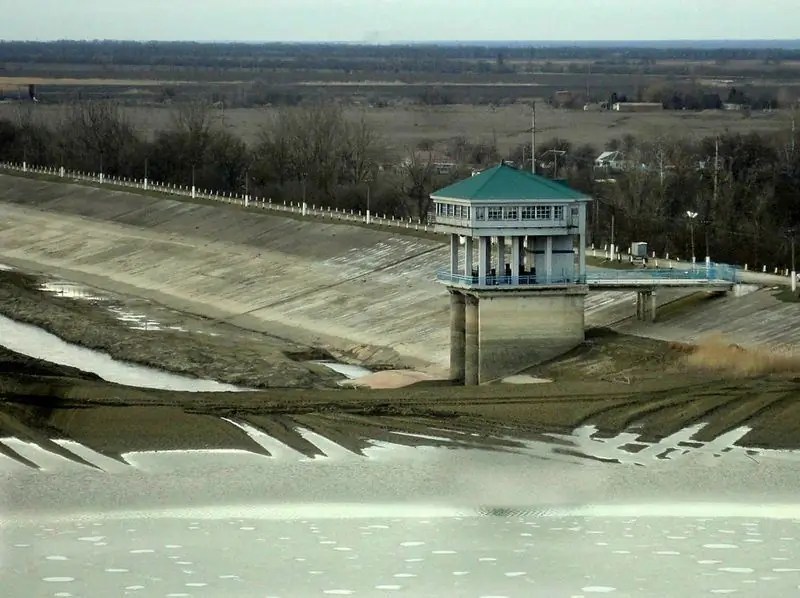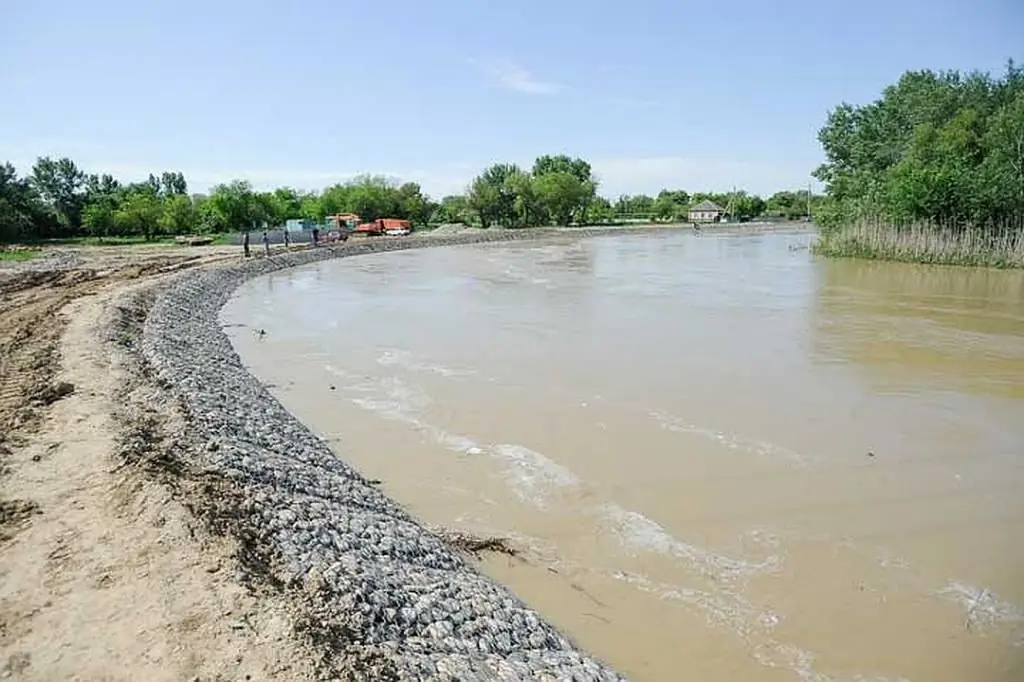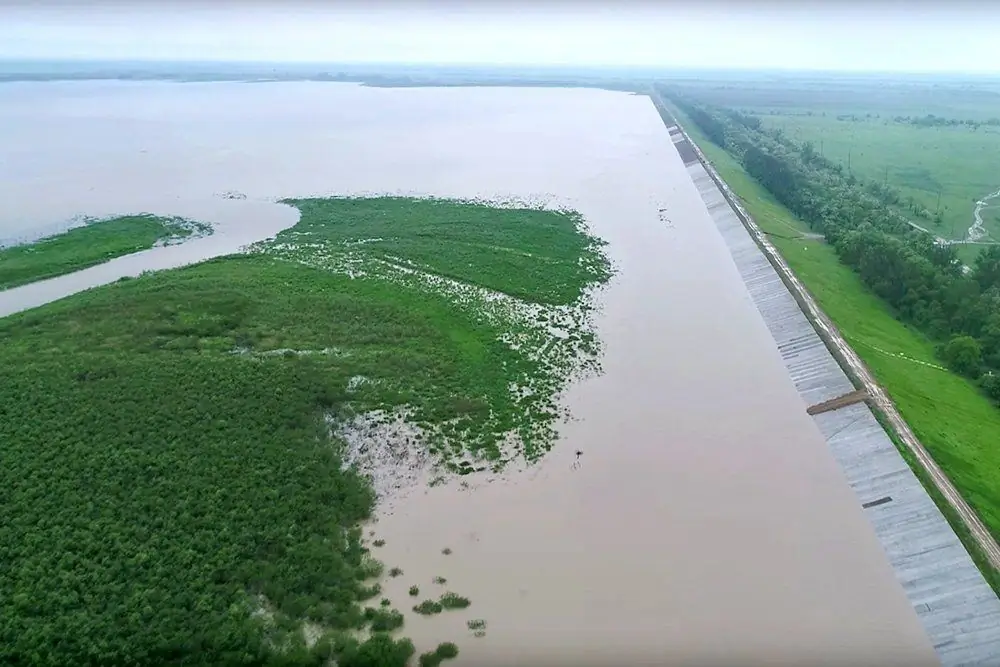- Author Henry Conors [email protected].
- Public 2024-02-12 02:40.
- Last modified 2025-01-23 09:07.
In 1965, the Otkaznenskoe reservoir was built in the Stavropol Territory to regulate the flow of the Kuma River. To date, the period of its operation has long expired, most of the reservoir is silted up. After the spring flood of 2017 and the threat of a dam break, the reconstruction of the reservoir began. At present, the renovation work has not yet been completed.
History and characteristics
Design and construction of the Otkaznensky reservoir in the Stavropol Territory lasted from 1961 to 1965. It was erected under the management of the Stavropolstroy company according to the project of Sevkavgiprovodkhoz. On May 5, 1965, the builders blocked the channel of the Kuma River with a dam 4.7 kilometers long and 27 meters high. And then began the partial filling of the reservoir with water. By September 1966, the water level in the Otkaznensky reservoir had reached a normal retaining horizon.

The design volume of the reservoir was 131 million cubic meters. The flood spillway was designed to pass 120 cubicmeters per second. In this case, the maximum retaining horizon would be 176 meters, and the mirror area would be 21.6 square kilometers. Despite the huge supply of water, the Otkaznenskoye reservoir is shallow. On average, its depth during the period of operation was 5.4 meters.
Silting and water pollution
During the first 35 years of use, 55 million cubic meters of silt deposits were deposited in the reservoir. The intensity of silting reached 1.35 million cubic meters per year. In this regard, the area and volume of the water surface of the Otkaznensky reservoir have significantly decreased. In 2008, the water area was 11.4 square kilometers, and in 2014 - 9.2. Of these, about 7 square kilometers were overgrown with trees and shrubs and reeds.
Water in the reservoir has a significant mineralization. The content of nitrites, oil products, copper, sulfates regularly exceeds the permissible concentrations. In the period from 2000 to 2015, the average annual concentration of copper was one to eight times higher than the norm, nitrite - one to five times, sulfates - three to six times, total iron - one and a half times, oil products - two and a half times. Usually, the water in the Otkaznensky reservoir is rated as “polluted.”

Fishing
Reservoir almost all the time of its existence was used for fish farming and fishing. The species composition is determined by the ichthyofauna of Kuma. There are silver carp, pike perch, carp, perch, bream, bighead and white carp, ram, catfish, grass carp. In 1986-2010, the commercial catch inthe average for the year was 155 tons, and in some years it reached 350 tons. The first place in terms of weight in catches was occupied by carp, the second - by silver carp.
Due to intense anthropogenic impact and changes in the hydrological regime, fishing at the Otkaznensky reservoir has lost its appeal in recent years. Water blooms, overgrowing of shallow areas have led to the transformation of faunal complexes, a decrease in the number and biological diversity of valuable commercial fish species. Now the fishery value of the reservoir is actually lost due to a sharp drop in fish productivity.
Reconstruction
In 2015, due to significant silting and unsatisfactory ecological state of the Otkaznensky reservoir, a program was developed for its reconstruction. The project with a total cost of 894 million rubles provides for bringing the canal to the spillway, repairing hydraulic structures, straightening the channel in two sections to increase the flow rate and transport capacity.

Repair began only in 2017, after the flood wave in the Stavropol Territory, when there was a danger of the dam breaking. To date, the bed of the reservoir has been cleaned of silt deposits, a new spillway has been built, and hydraulic facilities have been repaired. Reconstruction is ongoing and is scheduled to be completed by the end of 2020.






